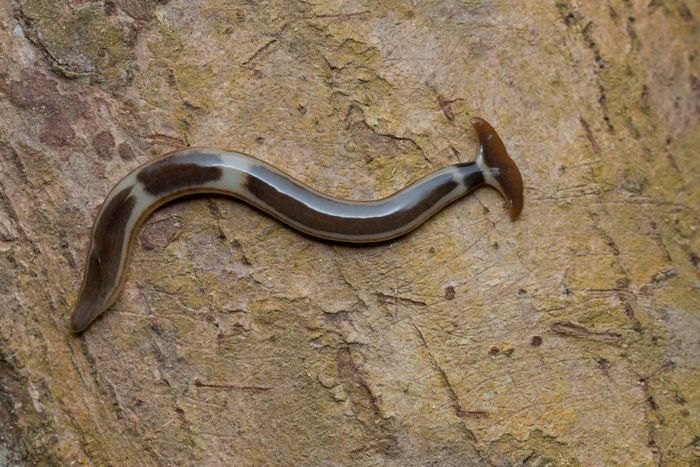
Hammerhead Flatworm Sightings Rise in Fort Bend County: What Residents Need to Know
With heavy rains drenching Fort Bend County in recent weeks, residents may have noticed more than puddles appearing on their patios and sidewalks. The Fort Bend County Master Gardeners are alerting locals to a rising number of hammerhead flatworm sightings—a highly invasive species that poses a threat to local ecosystems, particularly to earthworms, the unsung heroes of healthy gardens.
Native to Southeast Asia, the hammerhead flatworm (Bipalium kewense) thrives in hot, muggy conditions—making Southeast Texas a perfect home away from home. After rainfall, these worms often emerge from their daytime hiding spots beneath rocks, leaf litter, and shrubs, slithering across driveways, garden beds, and walkways under the cover of night.
These creatures are not just unpleasant to look at—they’re ecological bullies. Hammerhead flatworms feed on earthworms, which are essential for maintaining soil fertility, improving aeration, and helping plant roots absorb water efficiently. Gardeners rely heavily on these subterranean allies, making the hammerhead flatworm a direct threat to home landscapes, compost piles, and even the broader environment.
What to Look For
These flatworms are distinctive in appearance. They typically measure 8 to 12 inches in length, though some can stretch up to 15 inches. Their snake-like bodies are narrow and light honey-colored, often bearing one to five dark dorsal stripes. Their most identifiable feature is their half-moon shaped head, resembling a hammerhead shark.
Fort Bend County Master Gardeners report that residents have been spotting these worms more frequently following storms. The Texas Invasive Species Institute describes the flatworm’s activity pattern: “They feed and move about during the night and spend the daytime hiding under leaf litter, rocks, and logs—out of the sun and often under dripping garden faucets.”
Mobile Sidebar Ad
Why You Should Never Touch One
Despite their slow, slimy appearance, hammerhead flatworms should never be handled with bare hands. They secrete noxious chemicals through their skin, which can irritate human skin and are toxic if ingested by pets. These chemicals not only protect them from predators but also help them digest the earthworms they consume.
Additionally, many hammerhead flatworms can carry parasitic nematodes, adding another layer of concern for homeowners and gardeners.
Don’t Squish—Dispose with Care
If you come across one of these invasive flatworms, don’t chop it or squish it. Due to their unique biology, hammerhead flatworms reproduce through fragmentation—meaning a severed piece can regrow into a whole new worm. Instead, safe disposal is crucial.
Here’s how to safely get rid of them:
- Using gloves, a paper towel, or a stick, place the flatworm in a Ziplock bag with salt.
- Seal the bag and put it in the freezer for several days.
- Afterward, dispose of the bag in the trash.
Alternatively, you can spray them directly with a 30% vinegar concentrate, citrus oil, or a citrus oil and vinegar mixture. Just make sure they don’t crawl away before dying—always use a sealable container for disposal.
Mobile Sidebar Ad
Citizen Reports Are Crucial
The Texas Invasive Species Institute relies heavily on community reports to track the spread of Bipalium kewense. “Reporting and engagement from citizens like you is allowing us to understand the distribution,” the Institute notes.
Hammerhead flatworms were first recorded in U.S. greenhouses in the early 1900s and have now been confirmed in natural habitats across Texas, from Orange to Uvalde, including the DFW area, Gulf Coastal, and Central Texas counties. Other invasive species in the Bipalium family, such as Bipalium vagum, have also been spotted in the Houston and Austin areas, carrying the same ecological risks.
If you spot a hammerhead flatworm, report it with photos to the Texas Invasive Species Institute at tsusinvasives.org/home/edrr/reporting.html.
For updates on local environmental issues, pest advisories, and garden-friendly tips across Fort Bend County, stay tuned to My Neighborhood News.
 Tiffany Krenek has been on the My Neighborhood News team since August 2021. She is passionate about curating and sharing content that enriches the lives of our readers in a personal, meaningful way. A loving mother and wife, Tiffany and her family live in the West Houston/Cypress region.
Tiffany Krenek has been on the My Neighborhood News team since August 2021. She is passionate about curating and sharing content that enriches the lives of our readers in a personal, meaningful way. A loving mother and wife, Tiffany and her family live in the West Houston/Cypress region.






